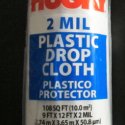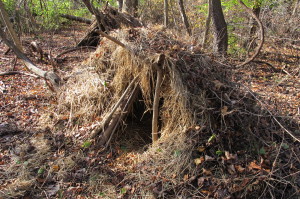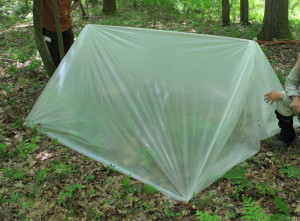Survival: Primitive v. Practical

In all of my survival courses at True North, one of the priorities that I most stress is shelter craft, and, likewise, the skill on which I most focus is the ability to quickly make a windproof and waterproof shelter. This probably wouldn’t surprise many. However, periodically, I have a student in a course that clearly seems dismayed, even disappointed, when I don’t show them how to make a primitive shelter — You know, the typical “debris hut” made out of sticks and leaves. In fact, it’s bad enough that the student feels gypped that I didn’t do so, but, worse, she or he sometimes is offended too when I criticize (though, I think “critique” is more fair) such shelters and the instructors who emphasize them. After all, as I remind all of my students, at True North, our mission, and our passion, is not to foster romantic, idealized notions of “wilderness survival” as do too many television shows and magazine articles, but to give them the skills and training to help keep them alive in an emergency until they either self-rescue or are rescued.
To give credit where it is due, I think that Peter Kummerfeldt, a former US Air Force SERE instructor and now civilian and government survival instructor, put it best in a lecture of his that I once heard. In short, he explained that the objective of a survival instructor should not be to teach primitive skills, but practical skills. I agree.
Look, it’s not that I am against learning to build a primitive shelter out of sticks and leaves, in fact, it’s a great skill. It’s just that I think that the skill should be put in context. After all, it has many limitations about which many don’t really think. Here are just three to consider:
 First, a primitive shelter is very time intensive to build. Even the standard (and supposedly simple) debris hut can take several hours to build. Which would be fine, except that survival situations don’t seem to develop at midday, but rather late in the afternoon … maybe even sunset. Would you, then, have the requisite 2-3 hours to build a shelter?
First, a primitive shelter is very time intensive to build. Even the standard (and supposedly simple) debris hut can take several hours to build. Which would be fine, except that survival situations don’t seem to develop at midday, but rather late in the afternoon … maybe even sunset. Would you, then, have the requisite 2-3 hours to build a shelter?
Second, while it is possible, it is darn near next to impossible, to construct a shelter that is actually waterproof and windproof. Trust me, it sucks spending the night in the rain. Worse, it can easily be life threatening.
For those of you who are Wilderness First Aid (WFA) certified, consider another limitation of debris huts: Are they the best shelters in which to assess, treat, and monitor your patient? Can you build a shelter quickly enough for a patient that is degenerating through the various stages of hypothermia? Did your WFA instructor even verbally touch upon these issues in your course?
 So what do I recommend? Preparation is one the key fundamentals to best dealing with any wilderness emergency. Therefore, I always carry a roll of plastic drop cloth. Yes, I know, it isn’t exactly impressive. But it is easy to carry, it is windproof and waterproof, and at about $2.50 it is more than affordable. I recommend at least 2 mil thick, maybe even 4 mil, and a roll that is at least 10’x10′ so that you’ll have enough of a shelter “foot-print.”
So what do I recommend? Preparation is one the key fundamentals to best dealing with any wilderness emergency. Therefore, I always carry a roll of plastic drop cloth. Yes, I know, it isn’t exactly impressive. But it is easy to carry, it is windproof and waterproof, and at about $2.50 it is more than affordable. I recommend at least 2 mil thick, maybe even 4 mil, and a roll that is at least 10’x10′ so that you’ll have enough of a shelter “foot-print.”
Why is plastic drop cloth so great? If I had too, I could build a shelter in about 60 seconds. Yes, seconds! But with 10 to 30 minutes, I could make something a bit more useful and practical (even impressive). A roll of plastic also has many other uses: I have a tool to collect water, or even to move or evacuate a patient, and if my plastic is colored blaze orange or International Blue, I have a signaling device as well.
I could spend another hour making a more comprehensive list, but let’s get down to brass tacks. From the two photographs of shelter samples that have been constructed by students, in which would you rather spend a cold, rainy night?
After all, the goal of survival is being able to stay alive until your situation improves or help arrives. Skills and tools that are practical, not primitive, you will perhaps therefore find more helpful. You’ll be better prepared, then, as Kummerfeldt explains, to turn a survival situation into more of “just an inconvenient night out.”
———–
Would you like to learn more about shelter craft and the other priorities of survival in a wilderness emergency? Then consider enrolling in one of our courses.

